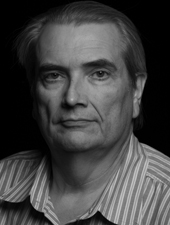Porteous, D. J., Thomson, P. A., Millar, J. K., Evans, K. L., Hennah, W., Soares, D. C., McCarthy, S., McCombie, W. R., Clapcote, S. J., Korth, C., Brandon, N. J., Sawa, A., Kamiya, A., Roder, J. C., Lawrie, S. M., McIntosh, A. M., St Clair, D., Blackwood, D. H. (February 2014) DISC1 as a genetic risk factor for schizophrenia and related major mental illness: response to Sullivan. Mol Psychiatry, 19 (2). pp. 141-3. ISSN 1359-4184
Abstract
In a recent guest editorial,1 Patrick Sullivan questioned several aspects of the original Scottish t(1;11) family in which the DISC1 gene was discovered.2, 3, 4 He challenged the wider significance of the original genetic finding and questioned the relevance of DISC1 biology to psychiatry, casting doubt on the validity of the ‘integrative’ approach. Sullivan prefaced his strong views on DISC1 by welcoming the ‘uncompromising statistical rigour and replication’ that is now being applied to his area of expertise in genome-wide association studies (GWAS). In his opinion, the evidence in support of DISC1 falls short of the mark, but the methods he champions are based on the assumption of the ‘common disease; common variant’ hypothesis, and are not valid tests of the ‘common disease; rare variant’ hypothesis of which DISC1 is a prime example. If we were to apply his criteria universally, we would, for example, be obliged to ignore everything learnt about Alzheimer’s Disease through APP, PSEN1 and PSEN2, none of which show up in GWAS, yet these clear-cut, family-based rare variant discoveries have provided profound insights into the disorder.5 We would likewise have to ignore much of the insights that have been gained from copy number variant analysis in autism6,7 and, indeed, schizophrenia.8,9 Denying an important role for rare variants makes no sense and contradicts theoretical considerations;10 insights from exceptional cases and families have repeatedly served medical research well across the full spectrum of conditions generally considered ‘common and complex’. So why does Sullivan pick out DISC1 for special criticism? This is not the time or place to reiterate the wealth of evidence in favour of DISC1 and of the DISC1 pathway, but readers might find it useful to consult recent reviews11, 12, 13, 14 in addition to those he cites.1 Here, we summarise his Table 1, answer his main questions and expand upon these in the main text.
| Item Type: | Paper |
|---|---|
| Subjects: | bioinformatics > genomics and proteomics > genetics & nucleic acid processing > DNA, RNA structure, function, modification diseases & disorders > mental disorders diseases & disorders > mental disorders > schizophrenia bioinformatics > genomics and proteomics > genetics & nucleic acid processing > DNA, RNA structure, function, modification > genes, structure and function > gene expression bioinformatics > genomics and proteomics > genetics & nucleic acid processing > DNA, RNA structure, function, modification > genes, structure and function |
| CSHL Authors: | |
| Communities: | CSHL labs > McCombie lab |
| Depositing User: | Matt Covey |
| Date: | February 2014 |
| Date Deposited: | 04 Feb 2014 15:24 |
| Last Modified: | 16 Jul 2021 20:11 |
| PMCID: | PMC4238281 |
| Related URLs: | |
| URI: | https://repository.cshl.edu/id/eprint/29473 |
Actions (login required)
 |
Administrator's edit/view item |

